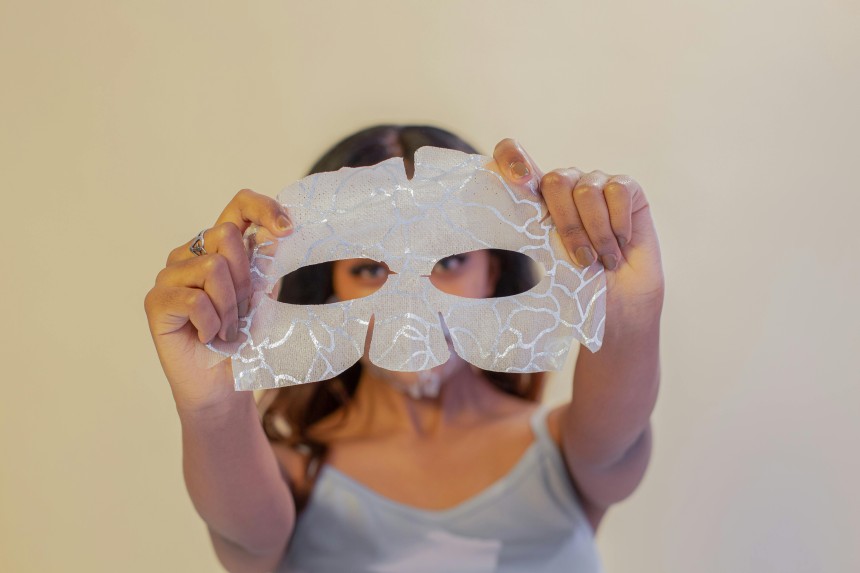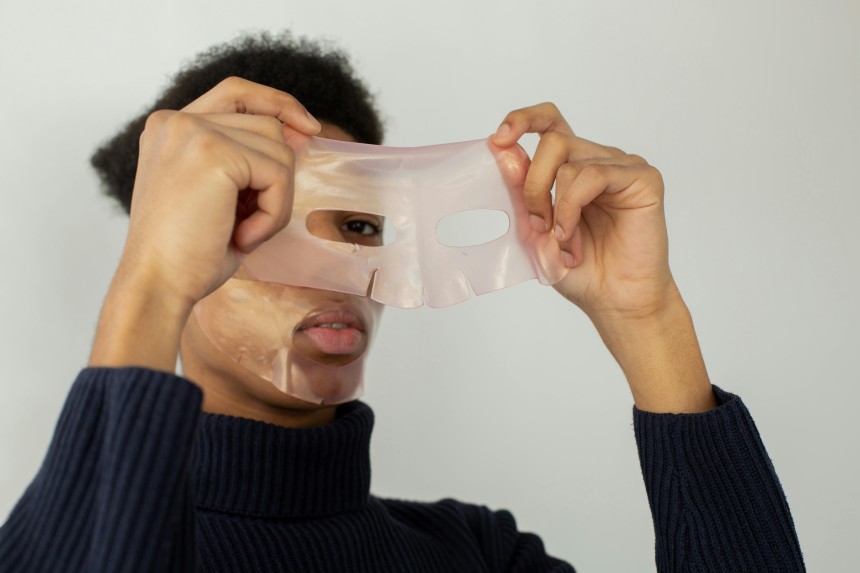
Conserving Beauty Shows Sheet Masks Don’t Have to End up in a Landfill
Conserving Beauty is leading the charge in making sheet masks more sustainable by offering eco-friendly alternatives that reduce waste. This article explores innovative solutions and practices for minimizing the environmental impact of sheet masks, including recyclable materials and reusable designs. Discover how these efforts are transforming the beauty industry and contributing to a more sustainable future for skincare.
Introduction
Sheet masks have become a staple in many beauty routines, celebrated for their convenience and skincare benefits. However, their popularity has raised significant environmental concerns due to their disposable nature and contribution to landfill waste. This article explores how the beauty industry is addressing these issues by introducing sustainable alternatives, showing that sheet masks don’t have to end up in a landfill.
The Popularity of Sheet Masks
Rise in Use and Market Trends
Rise in Use:
Sheet masks have surged in popularity over the past decade, becoming a staple in many skincare routines around the world. Originally hailing from Asia, these masks have gained widespread recognition in Western markets due to their convenience, effectiveness, and variety.
- Global Expansion:
- The global beauty market has seen a marked increase in sheet mask usage, with these products now being widely available in drugstores, supermarkets, and online platforms. The trend began with South Korean beauty routines and quickly spread internationally, driven by the growing influence of K-beauty.
- Social Media Influence:
- Social media platforms have played a significant role in popularizing sheet masks. Beauty influencers and skincare enthusiasts regularly share their experiences and recommendations, showcasing the masks' effectiveness and ease of use. This exposure has amplified consumer interest and led to widespread adoption.
- Product Innovation:
- The sheet mask market has seen substantial innovation, with brands offering a diverse range of masks targeting various skin concerns. This includes masks with ingredients like hyaluronic acid, vitamin C, and collagen, catering to different skin types and preferences. The variety and constant innovation have kept consumer interest high.
- E-commerce Growth:
- The rise of e-commerce has significantly contributed to the popularity of sheet masks. Online retailers and dedicated beauty platforms offer a wide selection of sheet masks, often with detailed product information and customer reviews. This accessibility has made it easier for consumers to explore and purchase masks suited to their needs.
- Economic Growth and Disposable Income:
- As disposable incomes rise, more consumers are willing to invest in skincare products that offer a luxury experience. Sheet masks, which are often priced affordably, have become a popular choice for those seeking effective skincare solutions without a hefty price tag.
Market Trends:
- Customization and Personalization:
- The trend towards personalized skincare has influenced the sheet mask market, with brands offering customizable options. Consumers can select masks based on their specific skin concerns, such as hydration, brightening, or anti-aging, enhancing the appeal of sheet masks.
- Sustainable and Eco-Friendly Options:
- There is a growing demand for eco-friendly and sustainable beauty products. The sheet mask industry is responding by offering masks with biodegradable materials and eco-friendly packaging, aligning with broader consumer preferences for environmentally conscious products.
- Professional and Spa Treatments:
- Sheet masks have increasingly been incorporated into professional and spa treatments. High-end spas and dermatology clinics offer premium sheet masks as part of their facial treatments, further boosting their status as a sought-after skincare product.

Benefits and Appeal of Sheet Masks
Benefits:
- Convenient and Easy to Use:
- Sheet masks are known for their convenience and ease of use. Unlike traditional masks that may require rinsing or application with brushes, sheet masks come pre-soaked with serum and are designed to be applied directly to the face. This makes them a hassle-free option for busy individuals.
- Targeted Treatment:
- Each sheet mask is formulated with specific active ingredients designed to address particular skin concerns. Whether it’s hydration, brightening, anti-aging, or soothing, sheet masks provide targeted treatment, allowing users to select products that meet their individual skincare needs.
- Intensive Hydration:
- Sheet masks are highly effective in delivering intensive hydration. The mask's material traps moisture and active ingredients against the skin, ensuring deeper absorption and longer-lasting hydration compared to many other skincare products.
- Instant Results:
- Many users appreciate the instant results provided by sheet masks. With regular use, sheet masks can deliver visible improvements in skin texture, brightness, and overall appearance, making them a popular choice for quick and noticeable skincare enhancements.
- Relaxation and Self-Care:
- The use of sheet masks offers a relaxing and pampering experience. Applying a sheet mask can be a soothing ritual that promotes self-care and stress relief, making it a favorite choice for individuals seeking a moment of relaxation in their skincare routine.
Appeal:
- Variety and Innovation:
- The extensive variety of sheet masks available appeals to a wide range of consumers. From basic hydrating masks to advanced treatments infused with innovative ingredients like probiotics or CBD, the diverse offerings cater to various preferences and skin concerns.
- Affordability:
- Sheet masks are generally affordable, providing an effective skincare solution without breaking the bank. This affordability, combined with their effectiveness, makes them accessible to a broad audience.
- Visual Appeal:
- The visual appeal of sheet masks, often featuring fun designs or patterns, adds to their attractiveness. Many consumers enjoy the aesthetic aspect of applying a sheet mask and sharing their experiences on social media, contributing to its popularity.

Environmental Concerns
Composition and Disposal Issues
Composition Issues:
- Synthetic Materials:
- Description: Many sheet masks are made from synthetic materials such as polyester, nylon, or other non-biodegradable fabrics. These materials are chosen for their ability to hold serum and adhere to the skin, but they do not break down naturally in the environment.
- Environmental Impact: The use of synthetic fibers contributes to environmental concerns because these materials persist in landfills for long periods. Unlike natural fibers, synthetic materials do not decompose quickly, leading to long-term environmental impact.
- Chemical Ingredients:
- Description: The serums used in sheet masks often contain a mix of active ingredients, some of which may include preservatives, colorants, and fragrances. While these ingredients are intended to enhance the effectiveness of the mask, they can pose environmental risks.
- Environmental Impact: Some chemicals in the serums can be harmful if they leach into water systems. Ingredients like parabens or synthetic fragrances may contribute to water pollution and disrupt aquatic ecosystems when washed off and disposed of improperly.
Disposal Issues:
- Single-Use Design:
- Description: Most sheet masks are designed for single use, meaning they are intended to be discarded after one application. This single-use nature contributes to the volume of waste generated.
- Environmental Impact: Single-use products generate more waste compared to reusable options. The disposal of these masks adds to the overall waste stream, increasing the burden on waste management systems.
- Non-Biodegradable Packaging:
- Description: Sheet masks are typically packaged in plastic pouches or wraps, which are often made from non-biodegradable materials. This packaging is essential for keeping the masks moist and protected but adds to the waste produced.
- Environmental Impact: The non-biodegradable packaging contributes to the accumulation of plastic waste in landfills and oceans. Plastic waste can take hundreds of years to break down, causing long-term environmental harm.

Contribution to Landfill Waste
Volume of Waste:
- High Turnover Rate:
- Description: The popularity of sheet masks has led to a high turnover rate, with consumers frequently purchasing and discarding these products. This high consumption rate contributes to the volume of waste generated.
- Environmental Impact: The increased use of single-use sheet masks results in a significant amount of waste being added to landfills. The high turnover rate means that a large quantity of masks and their packaging are discarded regularly.
- Cumulative Effect:
- Description: Even though individual sheet masks may seem small and inconsequential, the cumulative effect of millions of masks being discarded contributes significantly to landfill waste. Each discarded mask adds to the growing pile of non-biodegradable waste.
- Environmental Impact: The cumulative effect of sheet mask waste contributes to broader environmental issues such as landfill overflow and pollution. The sheer volume of single-use products exacerbates waste management challenges.
Impact on Waste Management:
- Challenges for Recycling:
- Description: Recycling sheet masks and their packaging can be challenging due to the mix of materials used. Many sheet masks are not recyclable due to their composition, and the plastic packaging often complicates the recycling process.
- Environmental Impact: The difficulty in recycling sheet masks means that a significant portion of this waste ends up in landfills. This situation highlights the need for improved waste management solutions and more sustainable packaging options.
- Decomposition Time:
- Description: The synthetic materials used in sheet masks do not decompose quickly. While natural materials break down more readily, synthetic fibers and plastics persist in landfills for extended periods.
- Environmental Impact: The long decomposition time of synthetic materials contributes to long-term environmental issues. These materials remain in landfills for decades, contributing to the accumulation of persistent waste.
FAQs
Q: What is the issue with sheet masks and landfills? A: Many sheet masks are single-use and made from non-biodegradable materials, contributing to environmental waste when they end up in landfills. Q: How can sheet masks be made more environmentally friendly? A: Sheet masks can be made more environmentally friendly by using biodegradable materials, reducing packaging waste, and offering reusable options. Q: What are some alternatives to disposable sheet masks? A: Alternatives include using reusable fabric masks that can be washed and reused, or choosing sheet masks made from eco-friendly, biodegradable materials. Q: How are beauty brands addressing the environmental impact of sheet masks? A: Some beauty brands are addressing the issue by developing sustainable sheet masks, adopting eco-friendly packaging, and encouraging recycling or composting.
Conclusion
The shift towards sustainable practices in the beauty industry, particularly with sheet masks, represents a critical step towards reducing environmental impact. By embracing biodegradable materials, reusable options, and innovative packaging solutions, the industry is making strides in minimizing waste. As consumer demand for eco-friendly products grows, the beauty sector’s commitment to sustainability will play a pivotal role in conserving beauty and protecting our planet for future generations.





